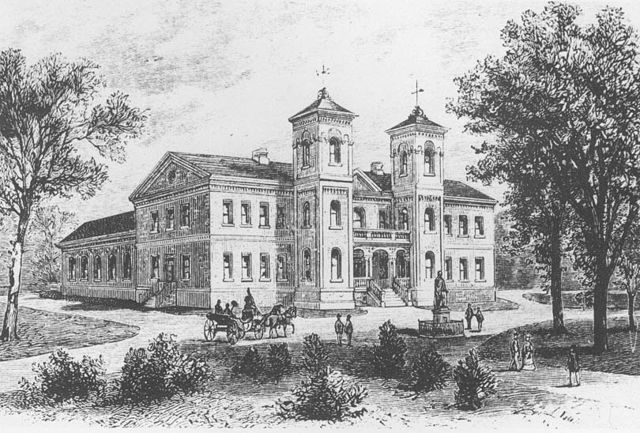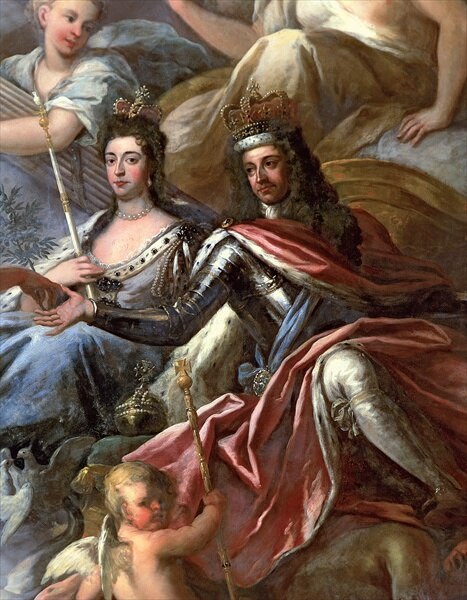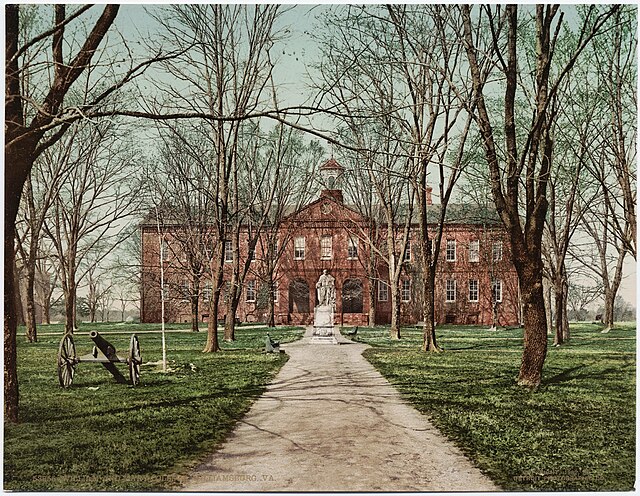Campus of the College of William & Mary
The College of William & Mary has maintained a campus in what is now Williamsburg, Virginia, since 1693. The cornerstone of the Wren Building, then known as the College Building and the oldest surviving academic building in the United States, was laid in 1695. The college's 18th-century campus includes the College Building, the President's House, and Brafferton–all of which were constructed using slave labor. These buildings were altered and damaged during the succeeding centuries before receiving significant restorations by the Colonial Williamsburg program during the 1920s and 1930s.
Clockwise from top left: Statue of Lord Botetourt in front of the Wren Building, Sunken Garden, College Woods, Zable Stadium, Monroe Hall, Swem Library
The earliest known drawing of the College Building, by Swiss traveler Franz Ludwig Michel, 1702
The College Yard on the Bodleian Plate, a copperplate engraving dated to c. 1732–1747. Left to right: Brafferton, College Building, and President's House
The College Building as it appeared from 1859–1862 with Italianate towers
College of William & Mary
The College of William & Mary in Virginia, is a public research university in Williamsburg, Virginia. Founded in 1693 under a royal charter issued by King William III and Queen Mary II, it is the second-oldest institution of higher education in the United States and the ninth-oldest in the English-speaking world. It is classified among "R2: Doctoral Universities – High Research Activity". In his 1985 book Public Ivies: A Guide to America's Best Public Undergraduate Colleges and Universities, Richard Moll included William & Mary as one of the original eight "Public Ivies". The university is also one of the original nine colonial colleges.
King William III and Queen Mary II, the college's namesakes
James Blair, founder of William & Mary
The College Building as it appeared from 1859–1862 with Italianate towers
The Wren Building, c. 1902







